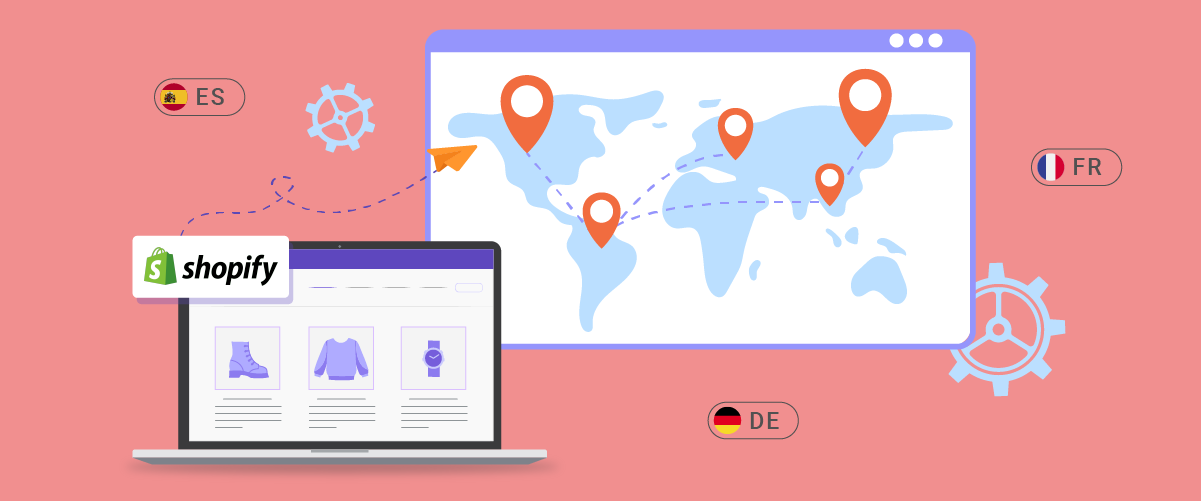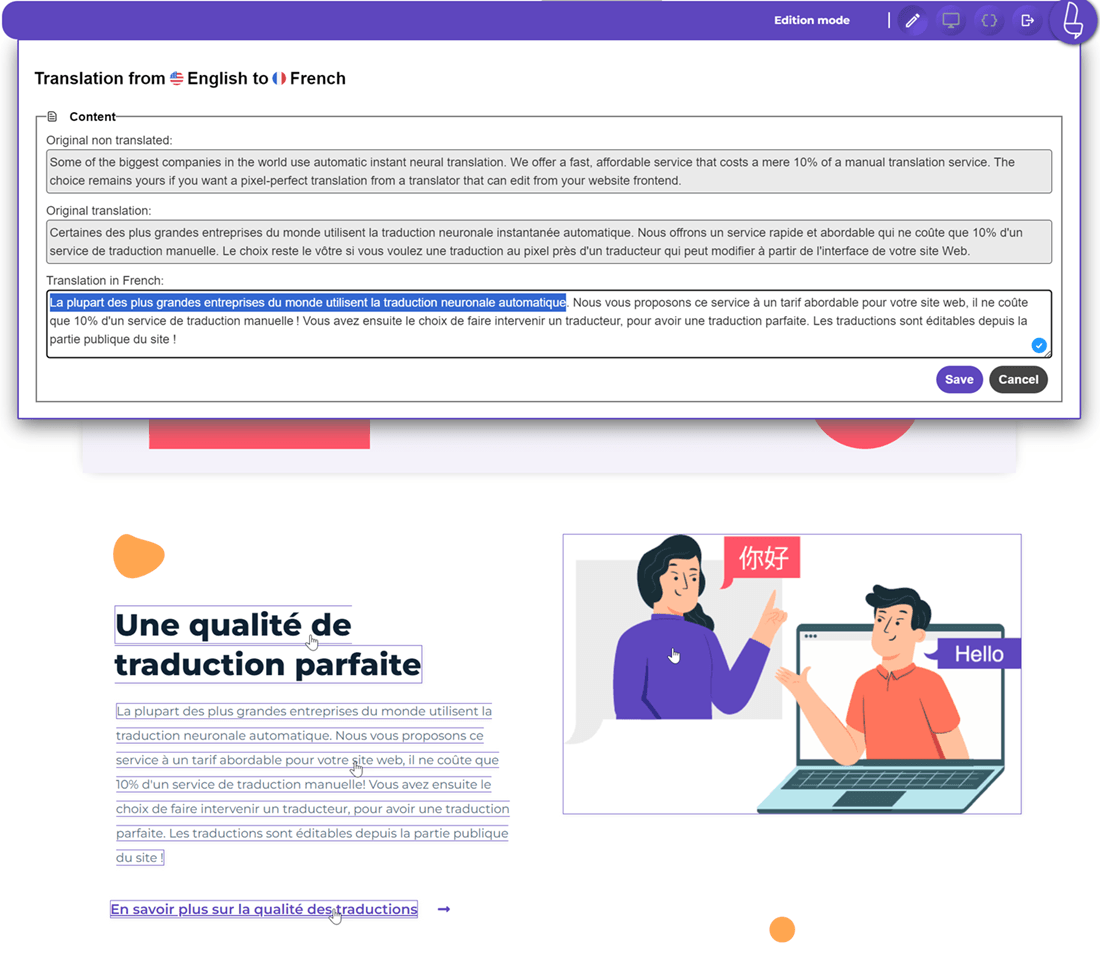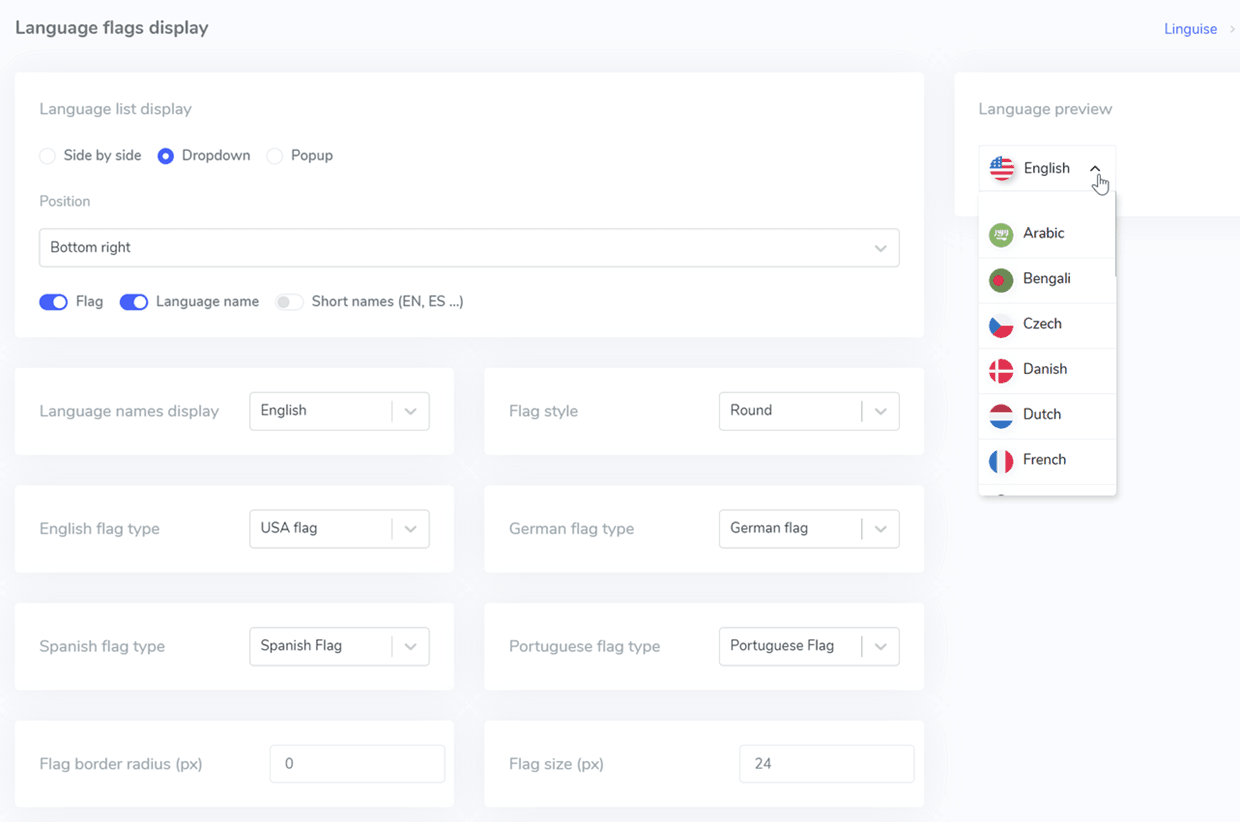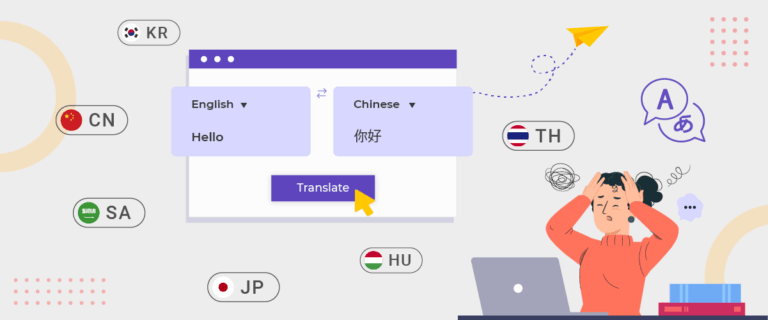Have you ever imagined your online store being accessible to buyers worldwide? With Shopify store localization, that’s no longer just a dream.
Did you know that Shopify is used by over 1.7 million sellers from 175 countries? With such a large number, it’s no surprise that localization is a key factor in reaching international markets. In this article, we’ll delve into what Shopify store localization is, why it’s important, and practical steps you can take to make your store globally friendly.
What is Shopify store localization?
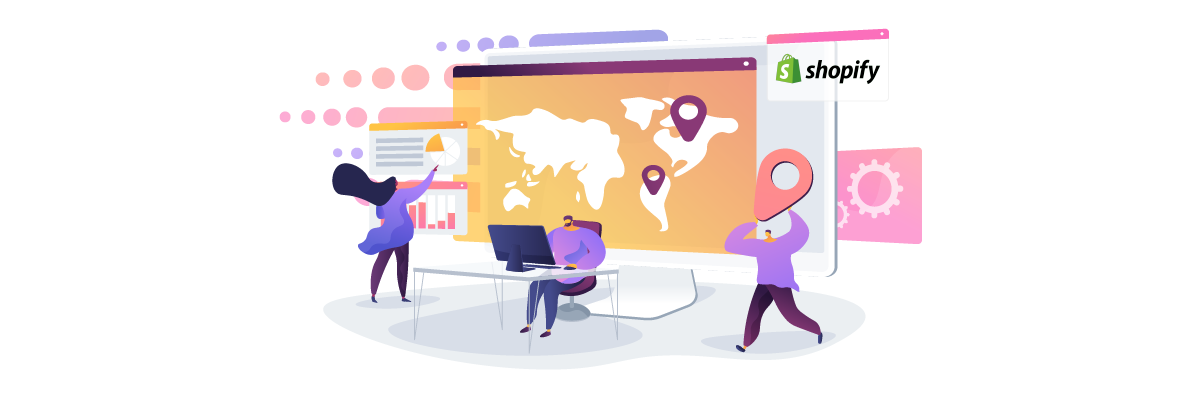
When discussing Shopify store localization, we refer to a comprehensive process beyond mere translation. It’s about tailoring your entire online store to resonate with customers in different target markets, making them feel right at home when they visit your shop. We’re not just changing words from one language to another; we’re adapting the entire shopping experience to match your international customers’ cultural preferences, habits, and expectations.
Imagine you’re welcoming guests from around the world into your virtual store. Shopify store localization is like being the perfect host, anticipating their needs and making them comfortable. This involves customizing various elements of your store, including the user interface, product descriptions, pricing, currency, date formats, and even the images and media you use.
We’re also considering adapting your store’s functionality, such as payment methods and shipping options, to suit local preferences. It’s about creating an experience that feels native to each market you’re targeting, increasing the likelihood that visitors will become customers and customers will become loyal fans of your brand.
Why Shopify store localization is important?

Shopify store localization isn’t just a nice-to-have feature—it’s a crucial strategy for expanding your e-commerce business globally. We’ve seen time and time again how website localization can be the key to unlocks tremendous growth potential for online stores. By adapting your shop to suit the preferences and needs of customers in different markets, you’re not just translating words.
Studies show that 76% of online shoppers prefer to buy products with information in their native language, and 40% will never buy from websites in other languages. These statistics underscore the importance of localization in capturing and retaining international customers. By localizing your Shopify store, you’re not only making your products more accessible but also showing respect for your customers’ cultures and preferences. This approach can lead to.
- Increased traffic and conversion rates
- Higher customer satisfaction
- Improved search engine rankings in target countries
- Expanded market reach
- Competitive advantage in new markets
- Higher average order values
- Reduced cart abandonment rates
- Improved customer support efficiency
Remember, in the world of e-commerce, every interaction counts. By prioritizing Shopify store localization, we’re not just translating words—we’re translating your business success into multiple languages and cultures.
Types of Shopify store localization

When localizing a Shopify store, it is important to choose an approach that aligns with your business goals and resources. The types of website localization can vary based on the depth and scope of the adaptation you wish to achieve.
- Minimum Viable Localization (MVL): MVL is suited for businesses in the early stages of expansion. It focuses on localizing essential components such as key features, product descriptions, and metadata, ensuring a swift market entry without extensive adaptation. For example, a startup clothing brand entering the French market may translate only its product descriptions, checkout process, and key navigation elements. They might also adjust the currency to Euros and localize the app store listing to appeal to French customers. However, other aspects like blog content and customer reviews might remain in the original language.
- Full Store Localization: Full localization is recommended for businesses aiming to establish a strong global presence. This approach involves adapting every store element, from the user interface to customer support, providing a seamless experience for users across different regions. For example, a well-established global brand like a major electronics retailer entering the Japanese market would fully localize its Shopify store. This would include translating all product pages, customer service resources, marketing materials, and emails. Additionally, the store’s design might be adjusted to reflect local aesthetics, and customer support would be offered in Japanese, adhering to local shopping preferences and expectations.
How to localize the Shopify store?

Localizing your Shopify store is crucial in expanding your business reach and enhancing the customer experience across global markets. By localizing your store, you can tailor content, language, and shopping experiences to meet the preferences and needs of customers in different countries or regions.
The localization process involves several key steps that we will discuss in detail. From selecting target markets to translating store content, each step plays a vital role in creating a more personalized and relevant shopping experience for your international customers.
#1 Choose target markets
Choosing the right target market is a crucial first step in the localization process for your Shopify store. You need to conduct thorough research, focusing on.
- Market potential in specific countries or regions
- Local consumer behavior and shopping preferences
- Industry trends in the target market
- Existing international sales data
- Website traffic from various countries or regions
- Local competition and competitors’ marketing strategies
For example, if you run an online fashion store and notice high customer interest in Japan and South Korea, you might consider focusing on the East Asian market as your initial localization target. Selecting the right target market will help optimize your resources and localization efforts.
#2 Choose a method of localization
After determining your target market, the next step is to choose the localization method that best suits your Shopify store. Here are several approaches you can consider, depending on your needs and resources.
- SDK with translation service providers: This method uses an SDK to automate content translation without requiring the resubmission of your app. It’s ideal for businesses requiring a flexible and fast localization process.
- API & integration connectors: This allows your store to connect with translation services to automate the translation process. You’ll be notified when translations are complete, making integrating them into your store easy.
- Manual + translation service providers: In this method, content is translated by a translation service, but you can also manually edit the translations on your store. This offers a balance of accurate translations with human editability.
Choosing the right method will impact your multilingual SEO shopify, content management, and customer experience, so consider each option carefully.
#3 Select the best translation service
Choosing the right translation service is crucial for ensuring the accuracy and quality of your localized store content. You have several options, from professional translators to automated translation solutions. Each has its advantages and disadvantages depending on your budget, project scale, and required accuracy.
A popular option that integrates well with Shopify is Linguise’s service translation. This service offers fast and efficient translations, making it ideal for stores with many products. However, automated translations may not capture linguistic nuances or cultural context perfectly. Linguise includes a front-end live editor feature to address this, allowing you to correct and edit automated translations as needed.
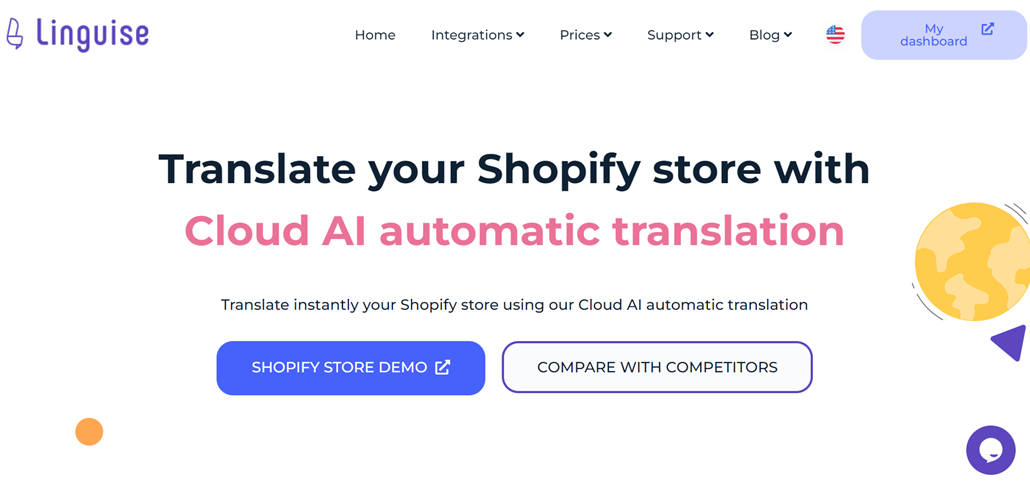
#4 Translate & localization store content
Translating store content is at the core of the localization process. It involves more than just literal translation; you must ensure that your brand’s message and tone remain consistent across all languages. Here are the key components of content that need translation and localization for your Shopify store.
- Site navigation: Translate menus, categories, and subcategories to align with local languages and cultures.
- Footer and contact information: Ensure elements like privacy policies, terms and conditions, and contact details are accurately translated.
- Product pages: Translate product descriptions, specifications, prices, and customer reviews to maintain consistent information.
- Currency: Adjust product prices to local currencies.
- Date and time formats: Use date and time formats that conform to local standards.
- Measurement units: Adapt measurements (e.g., cm to inches) to match local preferences.
- Messages and tone: Ensure marketing messages and brand tone are consistent across all languages. If your store features videos, add subtitles in the relevant languages to ensure all customers understand the content.
For example, if you sell skincare products featuring the term “glass skin,” popular in Korea, you might need to explain this concept more descriptively for markets unfamiliar with the trend. Effective localization is not just about language but also about making content culturally relevant.
#5 Set up language switcher
Implementing an easy-to-use language switcher is crucial for creating a seamless shopping experience for your international customers. Here are some key points to consider when setting up a language switcher.
- Place it in a visible location: Position the switcher in a prominent and accessible area, such as the site’s header or footer. This ensures that visitors can quickly find and use the language options.
- Use flag icons: Utilizing flag icons for each language can simplify navigation. Flag icons provide a visual, intuitive way to indicate language options, helping visitors quickly understand their choices.
- Maintain the same page: When visitors switch languages, ensure they are directed to the same page in the new language version. For instance, if visitors view a product page in English and switch to Japanese, they should be directed to the same product page in Japanese, not the homepage.
For example, if a customer is viewing a specific product page in English and decides to switch to Japanese, they should be redirected to the same product page in Japanese, not the homepage. This helps create a smoother experience and reduces user frustration.
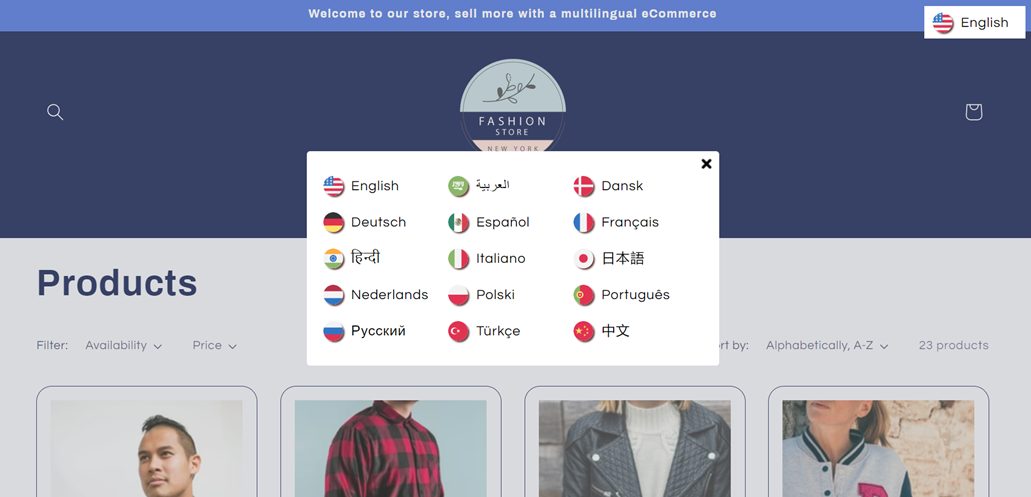
#6 Localization products and pages
Localizing product pages ensures a relevant and enjoyable customer experience in new markets. Here are some important considerations.
- Size and standards: Adjust size charts and product guides to local standards. For example, clothing or shoe sizes can vary between countries, so ensure size information matches the standards familiar to your target market.
- Product descriptions: Translate product descriptions accurately and tailor them to local habits and preferences. Features or materials relevant to one country need to be adjusted for others.
- Product images: Adapt product images if necessary to fit local visual preferences. This includes displaying products in relevant contexts or using images that align with local culture or lifestyle.
- Content and guides: Ensure usage guides, recipes, or instructions are adapted to local ingredients and consumer habits. For example, cooking guides or food serving suggestions should consider locally common ingredients.
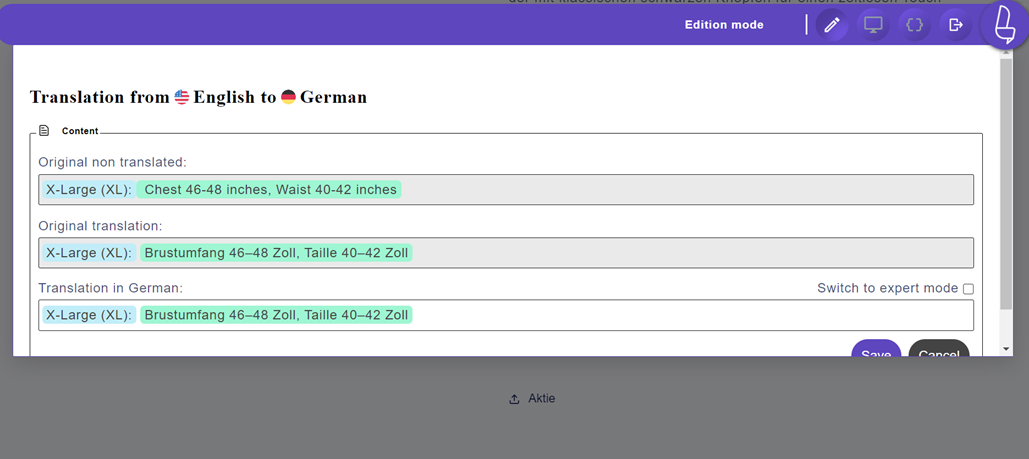
Addressing these aspects can provide customers with a more relevant and satisfying shopping experience in each target market.
Best practices of Shopify store localization

When localizing your Shopify store, it’s essential to address various aspects beyond text translation to ensure a seamless experience for international customers. Effective localization involves adapting your content and regional settings, cultural nuances, and SEO strategies. This comprehensive approach will help you build trust and improve user satisfaction across different markets.
Enable local currencies, dates & formats
You must consider the entire user experience, including how numbers and dates are presented. Enabling local currencies, date formats, and other regional settings can significantly enhance the shopping experience for your international customers.
Consider this; you’re browsing a foreign online store, and all prices are in an unfamiliar currency. Frustrating, right? That’s exactly how your customers feel when they can’t easily understand pricing. Here’s what you can do.
- Set up automatic currency conversion based on the user’s location
- Display dates in the format commonly used in each target market (e.g., MM/DD/YYYY for the US, DD/MM/YYYY for most European countries)
- Adjust units of measurement (e.g., inches to centimeters, pounds to kilograms)
The following is the localization of the date for German, from the English format, August 21, 2023 to the German format, namely 21. August 2023.
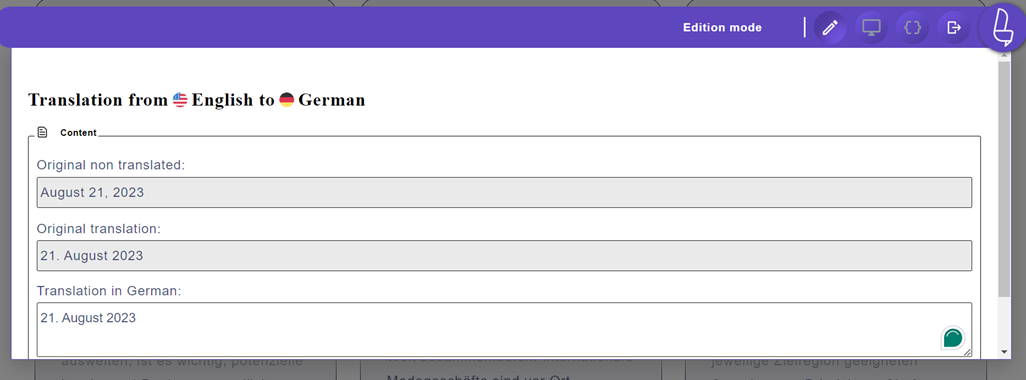
Remember, these small details can make a big difference in building trust and reducing friction in the buying process.
Adapt content for local markets
Adapting your content goes beyond word-for-word translation. It’s about understanding your target markets’ cultural nuances, preferences, and expectations. This process, transcreation, ensures that your message resonates with local audiences while maintaining your brand’s essence.
For example, let’s say you’re selling skincare products. In some Asian markets, “whitening” is a popular concept, while in Western markets, terms like “brightening” or “evening out skin tone” might be more appropriate. Here’s how you can approach content adaptation:
- Research local trends and preferences in your industry
- Collaborate with native speakers or local marketing experts
- Test your adapted content with a sample group from your target market
Remember, what works in one market may not work in another. Be flexible and willing to adjust your approach based on local feedback and performance data.
Optimize SEO for target languages
SEO is not one-size-fits-all, especially when targeting multiple languages and regions. Each market may have popular search engines, keyword preferences, and search behaviors. Optimizing your Shopify store for local SEO can significantly boost your visibility and organic traffic in new markets.
Here’s what you need to consider.
- Conduct international keyword research in each target language
- Optimize meta titles, descriptions, and ALT text for local keywords
- Create localized URL structures (e.g., /es/ for Spanish pages)
- Implement Shopify hreflang tags to indicate language and regional targeting
Pro tip: Don’t just translate your existing keywords. Research local search trends and popular terms in each market. You might be surprised at how different the search landscape can be!
Translate product metadata
When localizing your Shopify store, remember the often-overlooked product metadata. This includes elements like product titles, descriptions, and tags that are crucial in how customers and search engines discover and understand your products.
Properly translated metadata can significantly improve your store’s searchability and user experience. Here’s why it matters.
- Improved search relevance: Customers searching in their local language are more likely to find your products.
- Better user experience: Accurate, localized metadata helps customers quickly understand what your products are about.
- SEO benefits: Search engines can better index and rank your products for relevant local searches.
Take the time to carefully translate and optimize your product metadata for each target market. This investment can pay off in increased visibility and sales.
Localize images and media
Visual content speaks volumes, and ensuring your images and media resonate with your local audience is essential. This doesn’t always mean creating new visuals for each market but being mindful of cultural sensitivities and preferences.
Consider these aspects when localizing your visual content.
- Cultural appropriateness: Ensure images don’t contain gestures or symbols that might be offensive in certain cultures.
- Seasonal relevance: Adjust imagery to reflect local seasons and holidays.
- Text in images: Translate any text embedded in images or create separate localized versions.
- Models and representation: Use diverse models your local audience can relate to.

Remember, a picture is worth a thousand words – make sure those words speak the right language to your target audience!
Use unicode UTF-8 encoding
When taking your Shopify store global, using Unicode UTF-8 encoding is like giving your website a universal translator. It ensures that all characters, from Chinese logograms to Arabic script, display correctly across different devices and browsers. Without it, you might have a jumble of nonsensical symbols instead of coherent text.
Here’s why UTF-8 is crucial.
- It supports characters from virtually all writing systems
- It’s backwards-compatible with ASCII
- It’s the default encoding for HTML5 and XML
Implementing UTF-8 encoding is fundamental in creating an international online store. It’s not just about preventing errors; it’s about creating a seamless, professional experience for all your customers, regardless of their language or writing system.
Support Right to Left Language
Supporting right-to-left (RTL) languages like Arabic, Hebrew, or Urdu isn’t just about flipping your website’s layout. It’s about respecting the reading habits of millions of potential customers and providing them with a natural, intuitive browsing experience.
Implementing RTL support involves.
- Mirroring your layout, What’s on the left goes to the right, and vice versa.
- Adjusting text alignment and text direction
- Flipping icons and images that imply direction

Remember, supporting RTL languages goes beyond just the text. It affects the entire user interface, from navigation menus to product galleries. Paying attention to these details shows your commitment to serving these markets and can significantly enhance user experience.
Add local payment methods
Are local payments just a nice-to-have? Think again! Familiar payment options can be the difference between a completed purchase and an abandoned cart. Each market has its preferred payment methods, and catering to these preferences shows that you understand and value your customers.
Popular local payment methods to consider.
- iDEAL for the Netherlands
- Alipay and WeChat Pay for China
- SOFORT for Germany
- Boleto for Brazil
By integrating local payment methods, you facilitate transactions while building trust and credibility in new markets. This sends a clear signal to your customers that you’re committed to serving them on their terms.
Provide international shipping options
Offering international shipping isn’t just about getting your products from point A to point B. It’s about providing your global customers a seamless, transparent, and reliable delivery experience. This means clear shipping costs, reasonable delivery times, and easy-to-understand tracking information.
Key considerations for international shipping.
- Partner with reliable global shipping providers
- Offer multiple shipping speed options
- Provide clear information about customs and duties
Remember, your shipping options can be a key differentiator in international markets. Customers are often willing to pay more for faster, more reliable shipping with comprehensive tracking. Make sure your shipping strategy aligns with the expectations of each market you serve.
Provide customer support in the local language
Offering customer support in your customers’ native language isn’t just good service—it’s good business. It builds trust, improves customer satisfaction, and significantly boosts your reputation in new markets. But remember, this goes beyond just translating your FAQ page.
Effective local language support involves.
- Hiring native-speaking customer service representatives
- Offering support across multiple channels (email, chat, phone)
- Understanding and addressing culture-specific concerns
By providing support in local languages, you’re not just solving problems; you’re building relationships. It shows that you value your customers’ comfort and will go the extra mile to ensure their satisfaction. This level of commitment can turn one-time buyers into loyal, long-term customers.
Localization your Shopify store with Linguise translation service
Linguise is a powerful translation service designed to seamlessly integrate with your Shopify store, making the localization process efficient and effective. It offers a range of features tailored to meet the diverse needs of e-commerce businesses looking to expand their global reach. With Linguise, you can easily translate your Shopify store content, optimize for multilingual SEO, and provide a smooth browsing experience for international customers.
Fast integration with Shopify store
Linguise offers a fast, hassle-free installation of Shopify and an integration process with your Shopify store. The setup is designed to be user-friendly, allowing you to start localizing your content in no time. Here’s what makes the integration process stand out.
- One-click installation through the Shopify app store
- Connect your DNS automatically
- Automatic detection and translation of your store’s content
- No need for complex coding or technical expertise
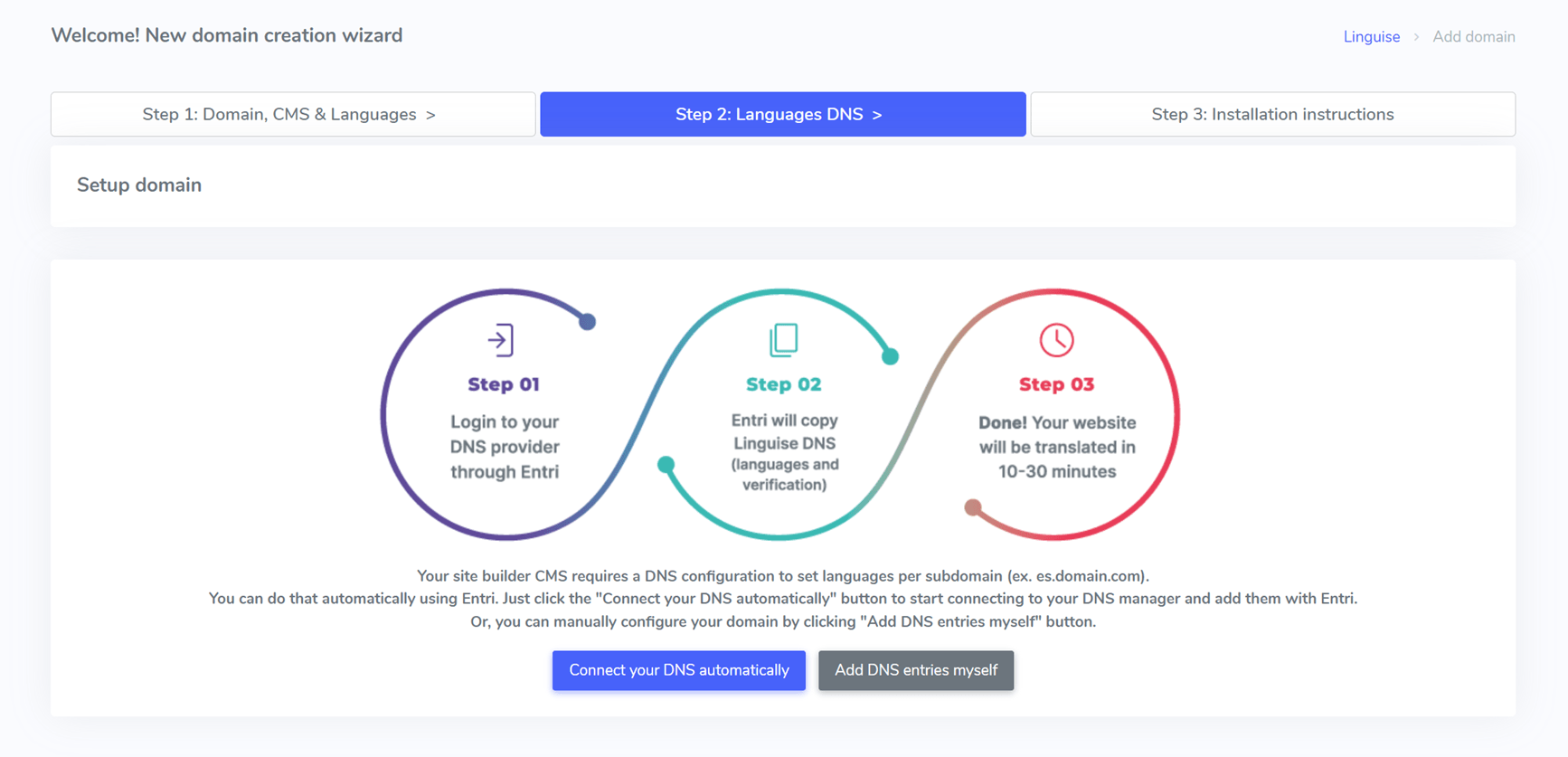
With Linguise, your multilingual store can run in minutes, saving you valuable time and resources.
Edit translation with front-end live editor
Linguise provides a powerful front-end live editor that allows you to fine-tune your translations directly on your website. This feature gives you complete control over the localization process, ensuring your content is translated and adapted to your target markets. Key benefits include.
- Real-time editing of translations in context
- Ability to adjust translations for brand voice and local nuances
- Instant preview of changes without the need for page reloads
This hands-on approach to translation editing helps you maintain brand consistency across all languages while catering to local preferences and expressions.
Customization options for language switcher
Linguise offers flexible customization options for your language switcher, allowing you to integrate it into your store’s design seamlessly. You can tailor the appearance and functionality of the language switcher to match your brand aesthetics and user experience requirements. Features include.
- Multiple design options (dropdown, flags, text-only, etc.)
- Customizable positioning on your website
- Ability to add or remove languages easily
By providing a user-friendly and visually appealing language switcher, you can enhance the browsing experience for your international customers and make it easier for them to access your content in their preferred language.
Optimize multilingual SEO store
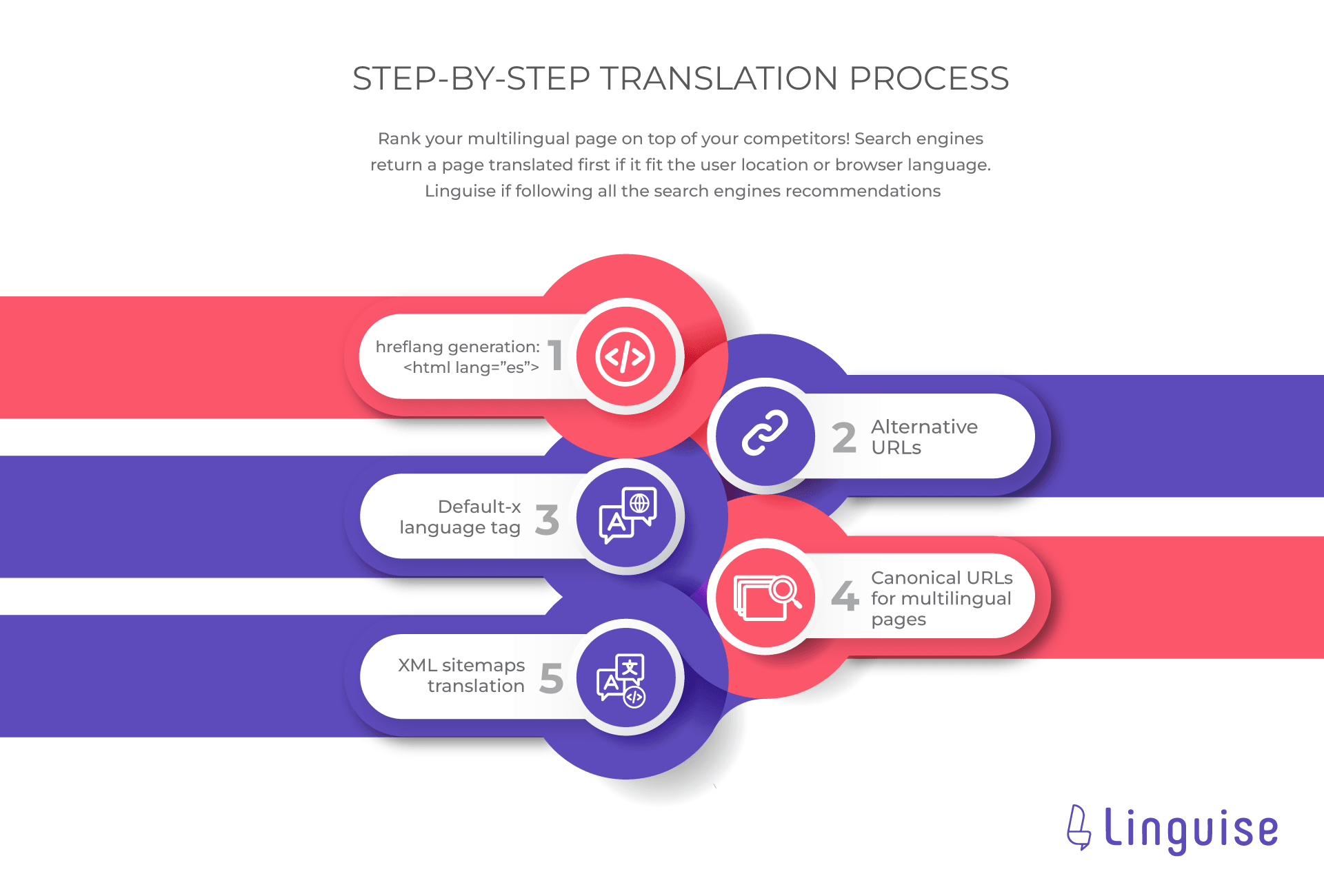
Linguise goes beyond simple translation by offering robust multilingual SEO optimization features. These tools help ensure that your localized content is discoverable by search engines in different markets. Key SEO optimization features include.
- Automatic generation of hreflang tags
- Translation of meta titles, descriptions, and alt text
- Creation of localized URLs for each language version
By leveraging these SEO features, you can improve your store’s visibility in international search results, driving more organic traffic and potential customers to your multilingual Shopify store.
Conclusion
Shopify store localization is crucial for e-commerce businesses to expand their global reach and connect with international customers. By implementing the best practices we’ve discussed, from enabling local currencies and adapting content to optimizing multilingual SEO and providing localized customer support, you can create a truly global shopping experience that resonates with customers across different markets and cultures.
Consider leveraging powerful tools like Linguise to streamline your localization efforts and ensure a smooth transition into new markets. With its seamless integration, user-friendly features, and robust SEO optimization capabilities, Linguise can significantly simplify the localization process for your Shopify store. Why not take the first step towards global expansion today? Create your Linguise account and start localizing your Shopify store to unlock new opportunities in international markets.

